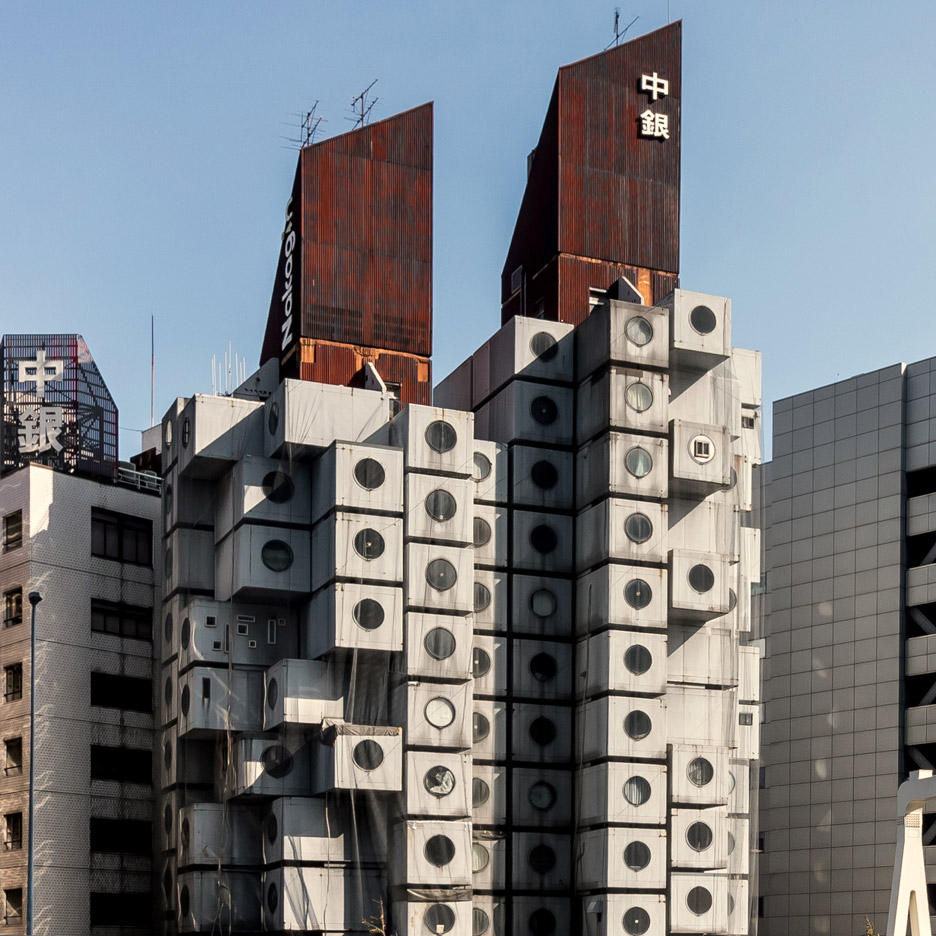3 Likes
#metabolism
Basal metabolic rate (the rate of energy consumption "at rest" without any physical or mental exertion) has declined in the US since the 1980s. Down 220 kcal/day on average for males and 122 kcal/day for females.
We are currently expending about 220 kcal/d less for males and 122 kcal/d less for females
#discoveries #biology #metabolism
We are currently expending about 220 kcal/d less for males and 122 kcal/d less for females than people of our age and body composition were in the late 1980s. These changes are sufficient to explain the obesity epidemic in the USA. @KevinH_PhD 7/https://t.co/N0gLjkbwJd
— John Speakman (@JohnSpeakman4) April 26, 2023
One person like that
1 Shares
#biology #health #diet #sweets #metabolism #fatandsugar #brain
Sweets change our brain
Why we can't keep our hands off chocolate bars and co.
March 22, 2023
Chocolate bars, crisps and fries - why can't we just ignore them in the supermarket? Researchers at the Max Planck Institute for Metabolism Research in Cologne, in collaboration with Yale University, have now shown that foods with a high fat and sugar content change our brain: If we regularly eat even small amounts of them, the brain learns to consume precisely these foods in the future...
https://www.mpg.de/20024294/0320-neur-sweets-change-our-brain-153735-x
3 Likes
Mind controls metabolism https://www.getdrip.com/broadcasts/729107607/94113d019160def5182dc #health #metabolism #medicine #sunshine
Here you go!
What We Think We Know About Metabolism May Be Wrong
A new study challenges assumptions about energy expenditure by people, including the idea that metabolism slows at middle age.
You're welcome! #StaySafe
#metabolism
One person like that
● NEWS ● #NBC #Health ☞ #Metabolism in adulthood does not slow as commonly believed, study finds https://www.nbcnews.com/health/health-news/metabolism-adulthood-does-not-slow-commonly-believed-study-finds-n1276650
One person like that
[this piece struck me strong throughout, no guarantees of great revelations for you, maybe you already know]
https://www.youtube.com/watch?v=nIGEnKAgRtk
:O
jaw dropping stuff, long before any mention of the topic in the title.
the spine stuff :O
the anxiety stuff :O
startlingly elucidating insights.
perspective shifting stuff. :)
the #autonomicnervoussystem became #disregulated
so it turns out
#anxiety #bipolar #depression #schizophrenia
are all #inflamatoryprocesses.
it's inflamatory.
it is #notpsychelogical.
jaw dropped yet? :)
#fascinating #perspective to entertain.
ther's far more in there than just that. well worth a watch. well worth paying attention to.
e.g.:
20,000,000 information bits in the subconscious, 40 information bits in the conscious.
:O why "mind over matter" and "willpower" struggles.
ps, [i add] the wim hof method, and cannabinoids, and natural sourced vitamins, and joyous laughter and relaxation, seem wise to deploy every day. :)
pps, that was also kinda astonishing (but should be already fully known and aknowledged), how, physicians/doctors/surgeons/etc dont get educated about diet in medical school.
... and we've been flipping out that they dont get educated about the endo-cannabinoid system (the main regulatory system of all the body's regulatory systems, with more receptors than any other system)!? they've far deeper problems yet. corporate capture, inducting "profitable" lies and lies of ommission.
#mercola #drdavidhanscom #spine #inflammation #anxiety #panic #panicattacks #stress #cytokines #susceptability #immunology #polyvagultheory #vagusnerve #cellbiology #pain #biochemsitry #time #chemicalcommunicators #enzymes #sympathetic #parasympathetic #gliolcells #threat #safety #chemical #viruses #bacteria #cancer #bully #difficultboss #thoughts #emotions #physical #neurodegenerative #neurodegenerativedisease #cardiacdisease #adultonsetdiabetes #obesity #parkinsons #altzheimers #inflammatorydissorder #fearless #chronicpain #glucose #carbohydrateexcess #diet #ocytocin #heartrate #restingheartrate #metabolism #humansocialise #coregulation #facialexpression #autonomicnervoussystem #cytokinestorm #stressmanagement #stressmanagementmisnomer #environment #environmentalstimulation #setting #physiological #calmdown #symptoms #remarkablejourney #mindfullness #bodyeffect #goodforyou #relaxation #inflamatorycytokines #responses #importantpieceofthepuzzle #stresschemicals #viralload #accademicperformance #expressivewriting #neuroplasticity #awareness #separation #meditation #sleep #forgiveness #anger #forgiveyourself #intermittantfasting #supplements #inflammatorymarkers #bmi #weight #metabolicflexibility #pinchednerves #humming #directedneuroplasticity #deepbreathing #directstimulationofthevagusnerve #mantras #feedback #psychelogical #slowbreathing #ketones #allcausemortality #vitamind #vitaminddeficiency #magnesium #zinc #disease #illness #wellness #notillness #lifestyle #lifestyles #autoimmunity #thrive #body #survive #train #heartdisease #suicide #pandemic #toxic #technocracy #toxiceconomy #fear #engineeredfear #lockdowns #masquerade #resources #brainwash #motive #worthyvampire #kleptarchy #revolution #wethepeople #play #gimmieback #spiritualjourney #oneconsciousnessexperiencingitselfsubjectively #resiliance #stubmytoe #normalresponse #psychologytoday #anxiety #anothernameforpain #unconsciouspowerfulcircuits #discover #nottrained #nutritionalinformation #outofpain #anxietydropstothefloor #reallythriveatalevelyneverknownexisted #remarkabletransition #healer #knowledgeablehealer #higherlevel #pronoia #deeplyappreciative #welcomechallenge #challenge #profound #profoundlybeneficial #massgrattitude #extremelyhonoured #painfree #wtfaredrsdoingthen #helping #helpingsomanypeople #example #thinkhard #why #conventional #failing #honest #objective #ntt #numbertotreat #preventive #preventative #profilactic #publicengagement #healthforward #technology #data #behaviour #ai #brainwashed #abusedtech #narrative #hypnosis #saturation #grateful #oportunity #issuereporting #welcome #psychology #psychologicalbenefit #directphysiologicalbenefits #positivity #mendwards #optimisinghealth #optimizinghealth #health #somaticwork #veryeffective #keepupthegoodwork #thegoodwork #goodwork #good #work #endeavor #play #playmore #hummore #sorryforsomanyhashtagsijustgottooenthusedbythiscontent #download #beforecensored #lol
backincontrol.com
might be worth a look... idk. make your own mind up. in a sea of misinformation, everybody's a shill.
6 Comments
Commenter says tearing down the Nakagin Capsule Tower "is a tragedy"
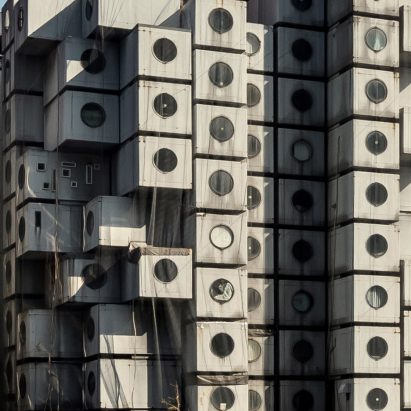
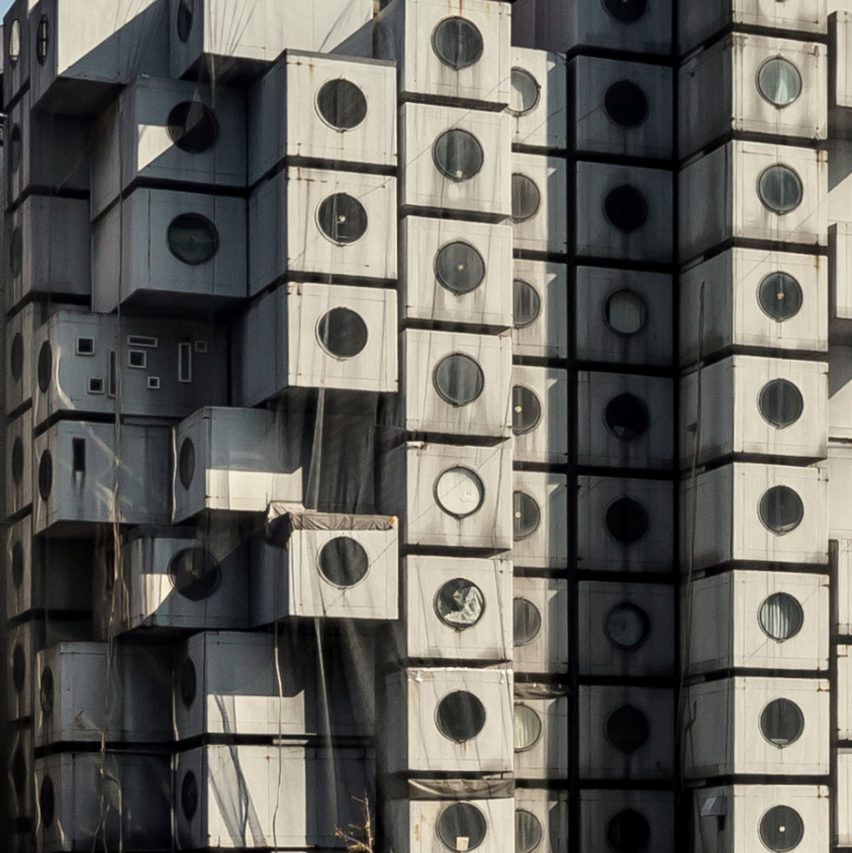
In this week's comments update, readers are debating the disassembly of Tokyo's Nakagin Capsule Tower.
The Nakagin Capsule Tower in Tokyo, a 20th-century metabolist landmark by architect Kisho Kurokawa, is set to be disassembled and the capsules either donated to museums or turned into rental units.
Built over the course of just 30 days in 1972, the housing block is considered a rare example of Japanese metabolism.
"A really wonderful and important building"
Readers are divided. "This is very, very sad," said Andrew.
Catcassidy agreed: "This is a really wonderful and important building. While it may have outlived its function and is no longer viable as residences, tearing it down is a tragedy. This is short-sightedness. Once it's gone, you can't get it back."
"Interesting story, yet the architectural vision is short-sighted, utilitarian, and quite depressing," replied Valeria Lie Alonso. "No surprise that the architects were influenced by Marxism. No life, no beauty, no imagination. A dystopia envisioned for the rational worst-case scenario rather than aspiring for better ways of life."
"It will be dismantled but not forgotten," concluded Jacopo. "Please don't be too sad. Think of it as a transformation. Few buildings go from architecture to art and live forever in spirit rather than in concrete."
Is tearing the building down a tragedy? Join the discussion ›
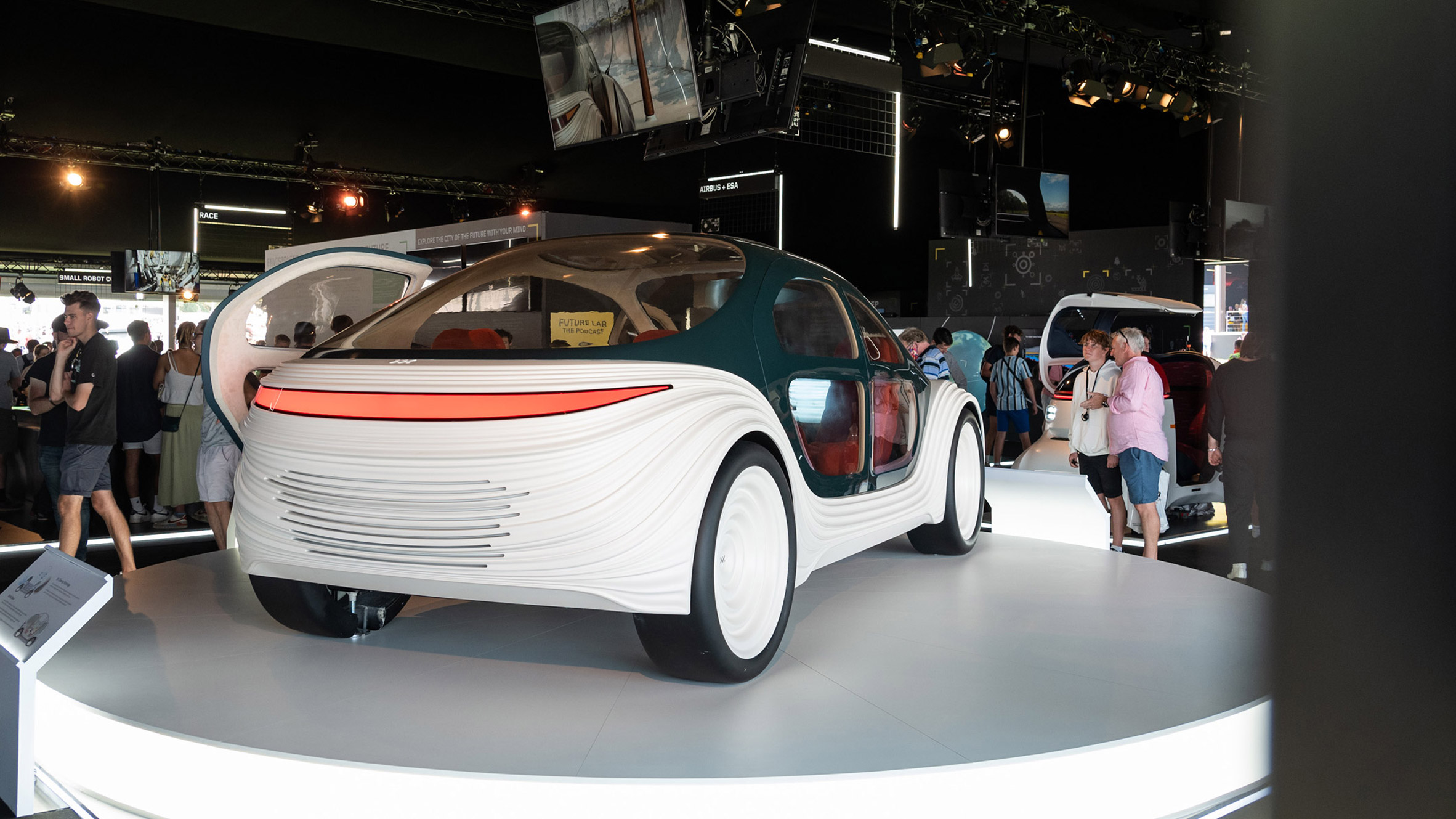 Heatherwick Studio unveils Airo prototype at Goodwood Festival of Speed
Heatherwick Studio unveils Airo prototype at Goodwood Festival of Speed
Reader says Thomas Heatherwick's electric car is "ribbed like a condom"
Commenters are discussing Thomas Heatherwick's prototype of an electric car that the studio claims will clean the air as it drives. Airo was designed for Chinese car brand IM Motors.
"Amazing," said Yoram Maron. "Wrinkled like an old lady but for sure exceptional. Why not?"
"Very Clockwork Orangey," continued Hilton Purvis. "Ribbed like a condom, white to boot (would definitely be a pain to clean). I love concept cars though. Keep 'em comin'… so we can critique 'em."
"Of all the ways to do an interior and they chose to use my parent's corduroy lounge chairs from the 70s," added Christopher Kelley.
What do you think of Airo? Join the discussion ›
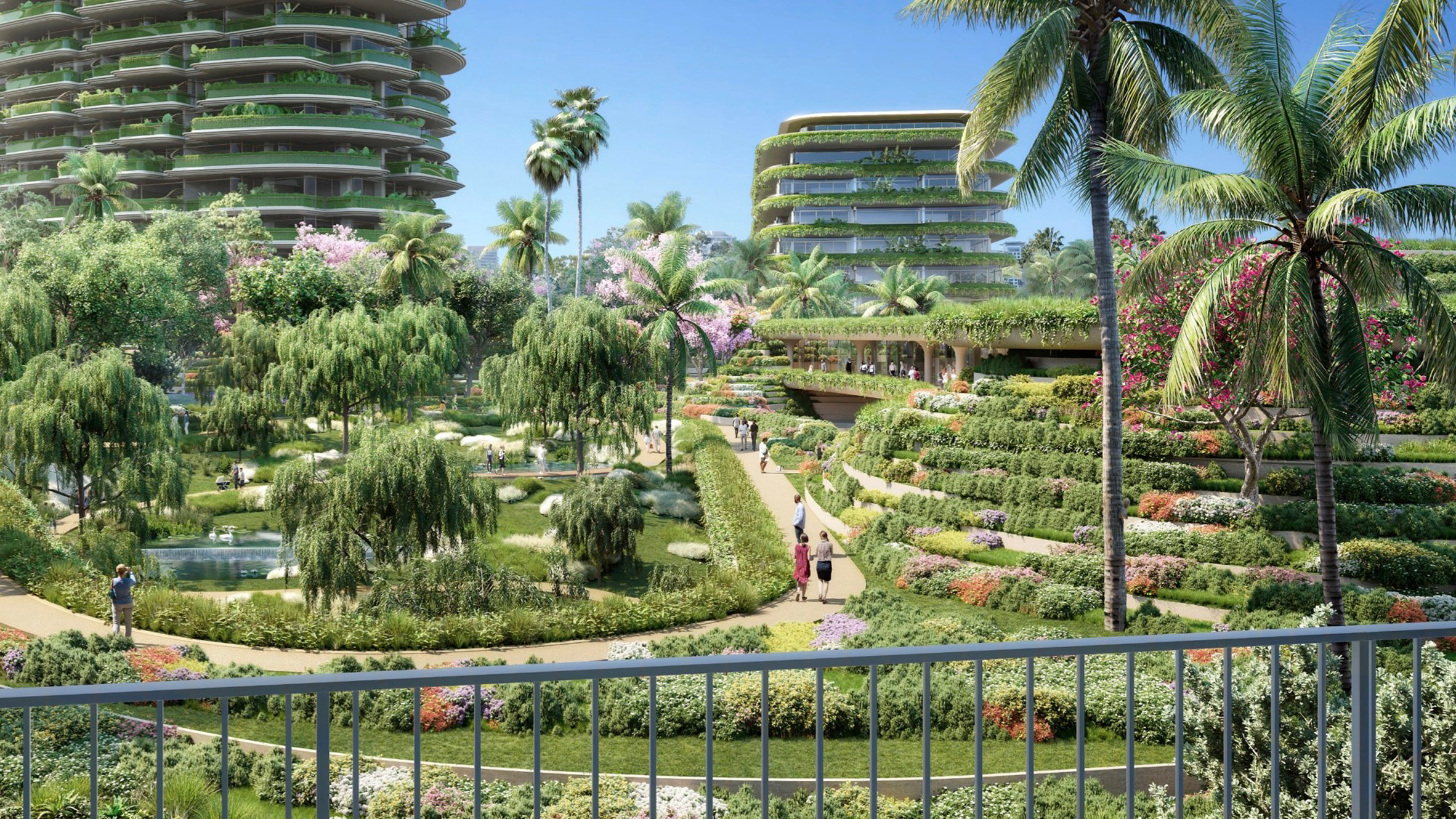 Foster + Partners gets green light for One Beverly Hills development
Foster + Partners gets green light for One Beverly Hills development
Commenter "loves subtle fence" keeping people out of development
Readers aren't sold on Foster + Partners' plans to redevelop a triangular site in Beverly Hills, Los Angeles, with a botanical garden and a pair of plant-covered high-rises.
"So is this a new towered-gated-community with communal ownership scheme to build a very expensive part of a branded city?" asked 竜皐. "The Commerce city had come so far. No 'ordinary' citizens are allowed in."
Troels Steenholdt Heiredal agreed: "I love the subtle fence in the foreground of the first rendering – what a delicate way of telling the onlookers 'this will not be for you, please stay out'."
"Come on, people!" replied Apsco Radiales. "Better than seeing acres and acres of parking lots and condos like the one Gensler just designed for Vancouver. You have to admit!"
Are commenters being harsh? Join the discussion ›
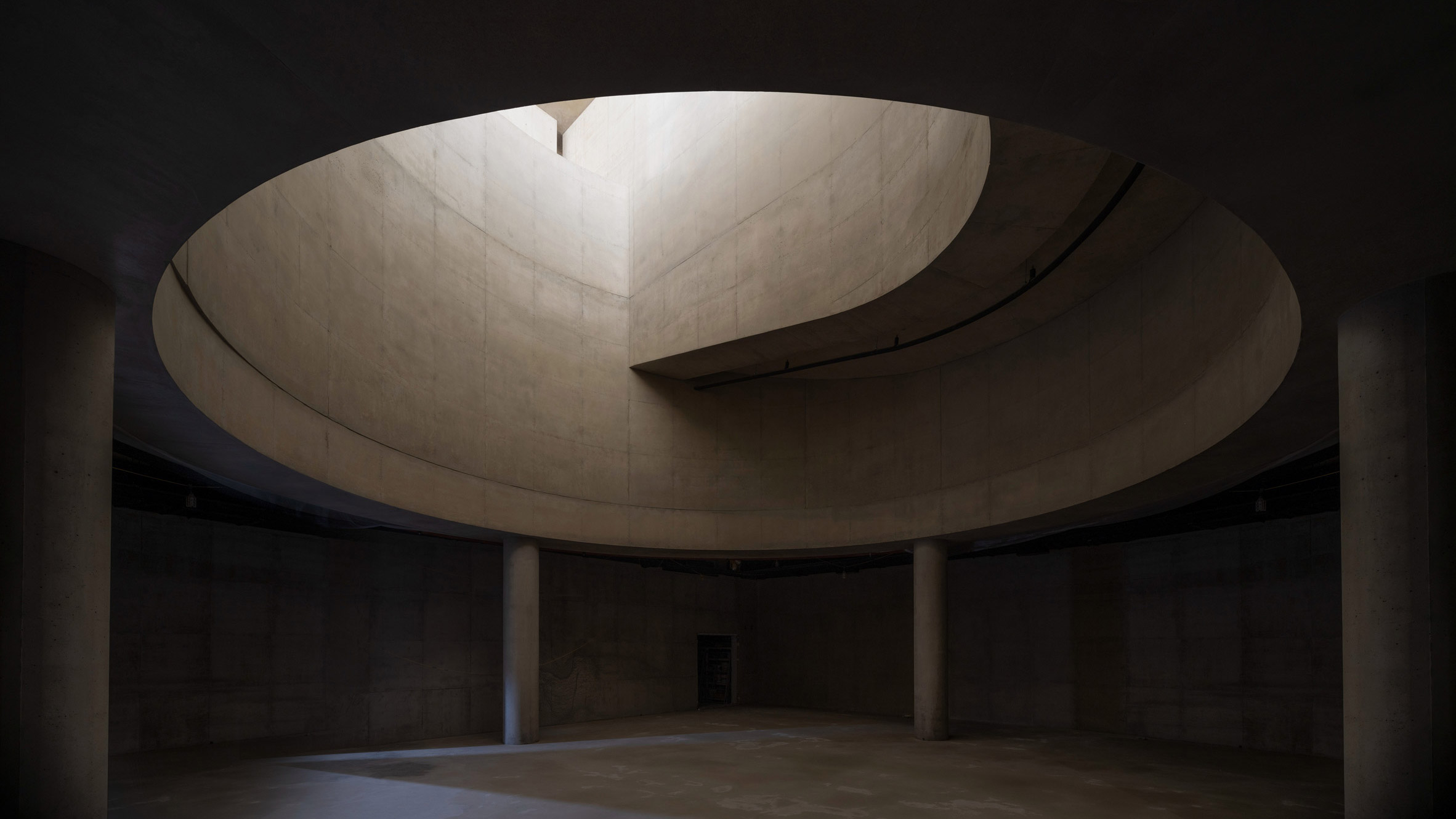 Images of Herzog & de Meuron's wedge-shaped art institute in Seoul revealed
Images of Herzog & de Meuron's wedge-shaped art institute in Seoul revealed
Reader says Dezeen founder was "having a bad day" in debate over article
Commenters debated with Dezeen's founder and editor-in-chief Marcus Fairs on whether we should have published a preview of the ST/SongEun Building in Seoul, South Korea. The Herzog & de Meuron designed building is due to open in September.
"So little information here," said Alfred Hitchcock. "A few abstract photos and no drawings. What's the point of the press release?"
"I am assuming that at this point, everyone understands that there are certain types of articles – project features, interviews, promos, and yes, little incomplete teasers sometimes," replied OM. "Is this your first day on Dezeen/the internet?"
"I don't know why this bothers you so much," said Fairs. "We got sent a few images by the PR company ahead of the building's opening and thought it would make a good, quick news story. We'll do another, more in-depth story later when we get the full image set and (hopefully) plans. We're a news site and this is how we roll!"
"To sum up, key points thus far," concluded JZ. "1) Dezeen readers still find the editorial decisions to release stories with a paucity of information to be a huge weakness of the journal. 2) Lack of information has allowed confirmation bias to be triggered and readers find the building cold and disrespectful of the context. 3) Marcus was having a bad day."
Should Dezeen have published the article? Join the discussion ›
Read more Dezeen comments
Dezeen is the world's most commented architecture and design magazine, receiving thousands of comments each month from readers. Keep up to date on the latest discussions on our comments page.
The post Commenter says tearing down the Nakagin Capsule Tower "is a tragedy" appeared first on Dezeen.
#all #comments #modulararchitecture #kishokurokawa #commentsupdate #metabolism
Nakagin Capsule Tower to be dismantled and turned into rental accommodation and exhibits
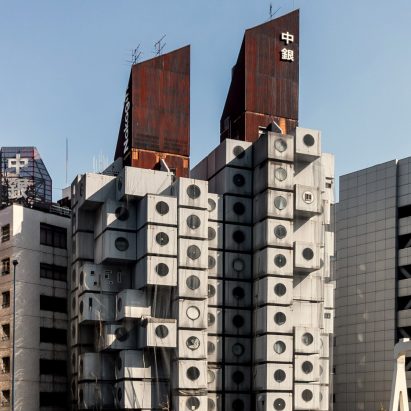
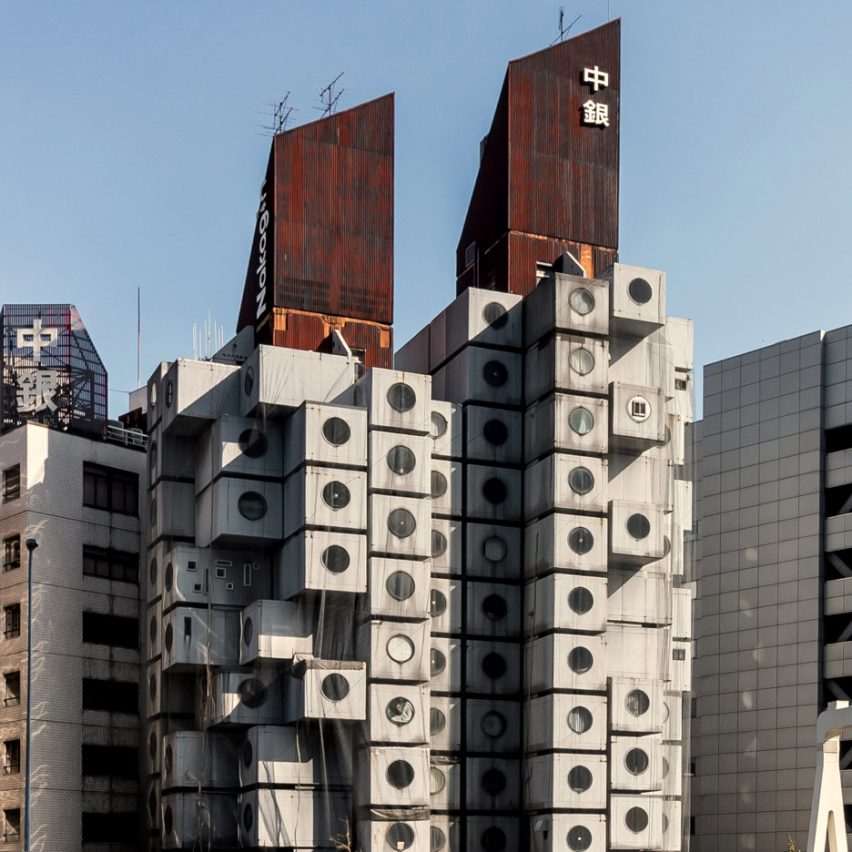
Tokyo's Nakagin Capsule Tower, the 20th-century metabolist landmark by architect Kisho Kurokawa, is set to be disassembled and donated to museums or turned into rental units.
Located in the Ginza neighbourhood and built over the course of just 30 days in 1972, the housing block is considered a rare example of Japanese metabolism.
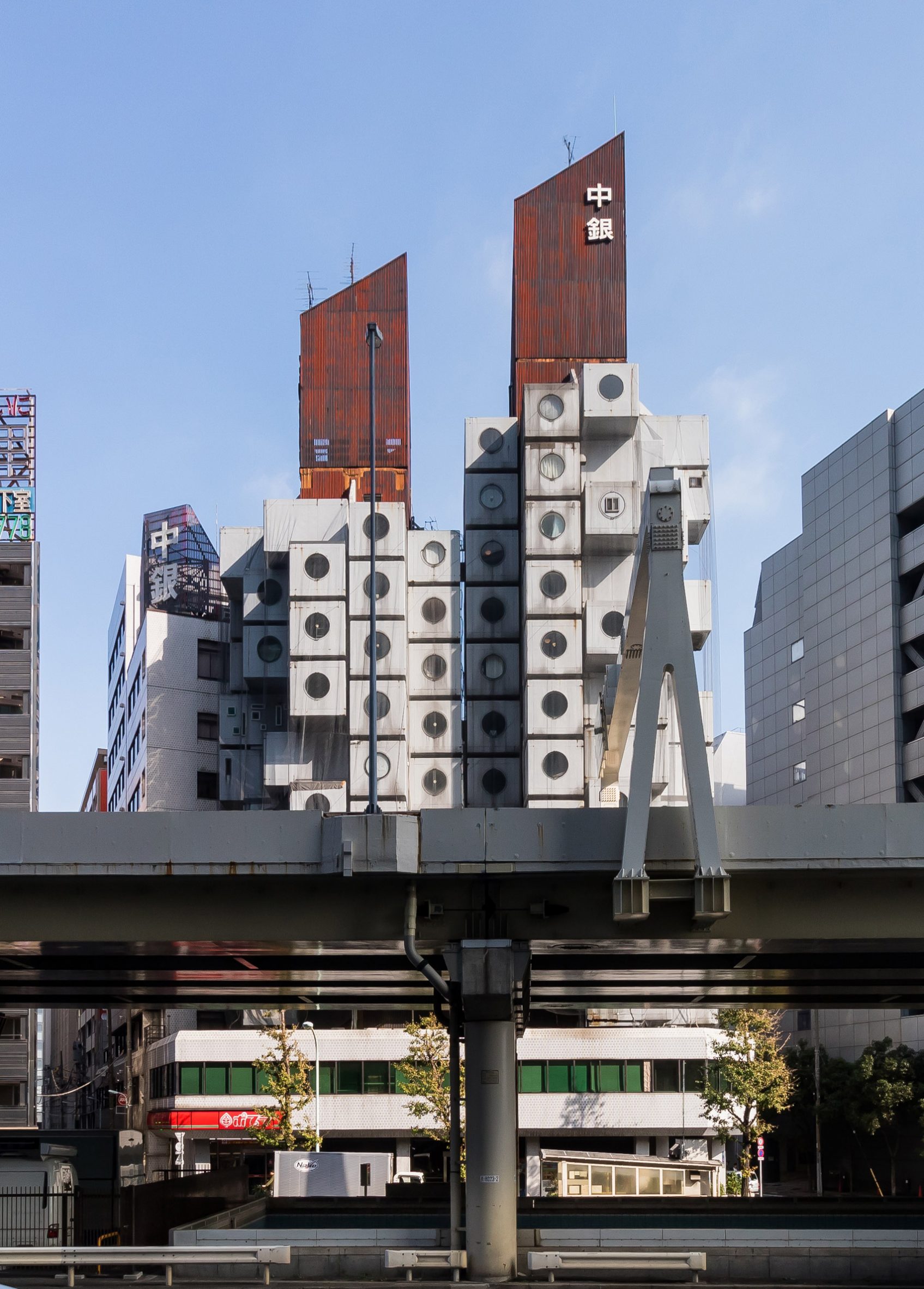 Top: the Nakagin Capsule Tower is made of steel modules. Photo is by Michael. Above: the building is a landmark of Tokyo's Ginza neighbourhood. Photo is by Kakidai
Top: the Nakagin Capsule Tower is made of steel modules. Photo is by Michael. Above: the building is a landmark of Tokyo's Ginza neighbourhood. Photo is by Kakidai
Much of the concrete and steel tower has fallen into disrepair and has been under threat of demolition since 2007.
Now, owners and residents of Nakagin Capsule Tower have decided to sell their homes and divvy up the capsules after attempts to find a buyer prepared to fund the restoration failed.
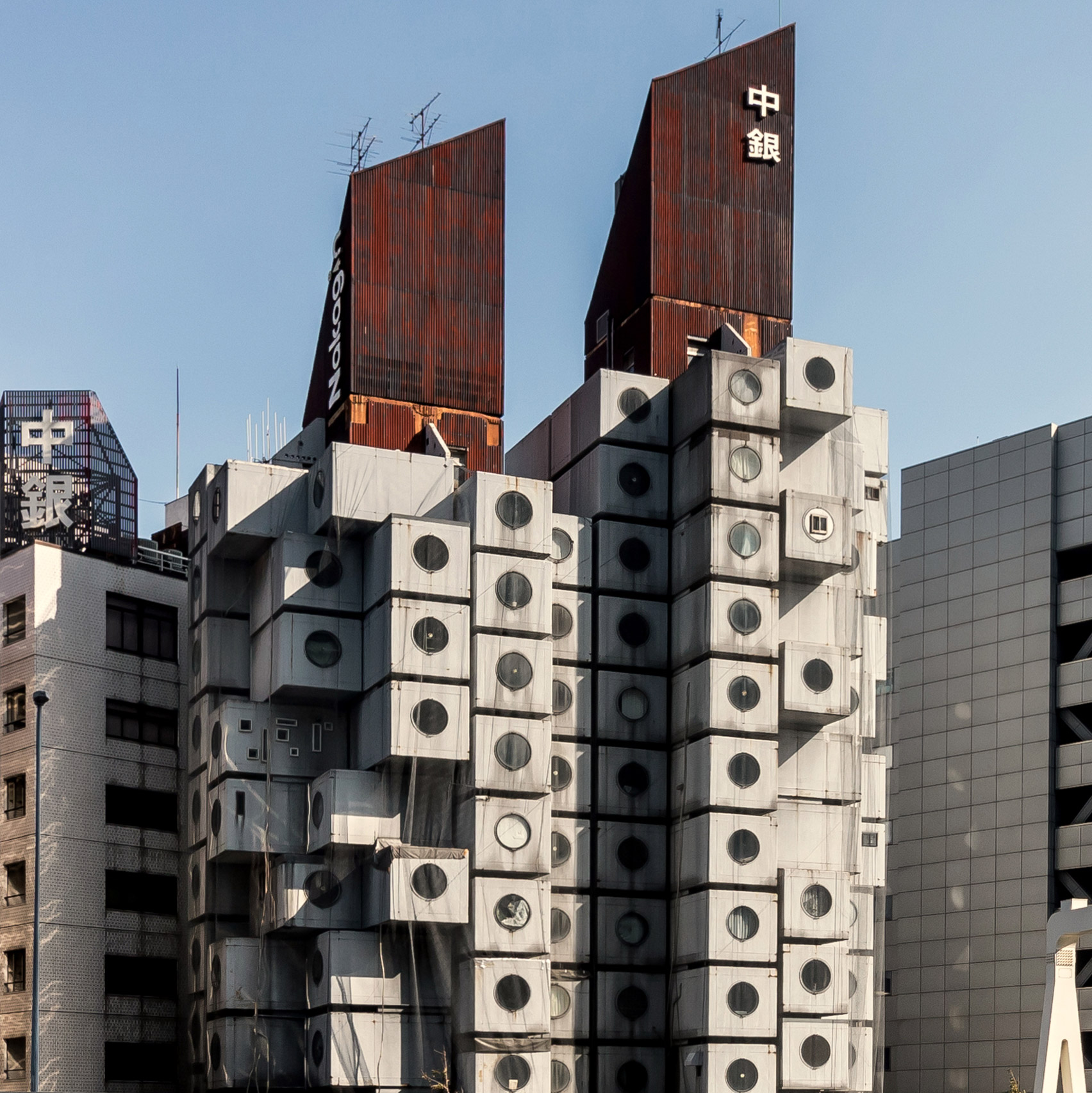 The tower will now be taken apart and repurposed. Photo is by Kakidai
The tower will now be taken apart and repurposed. Photo is by Kakidai
A module is already on display at Japan's Museum of Modern Art Saitama and the Centre Pompidou in Paris is reportedly keen to acquire one for its collection.
The owners are now crowdfunding to renovate the remaining 139 capsules so that they can be donated to institutions, or be relocated elsewhere in Tokyo and rented out to people who want to experience staying in one.
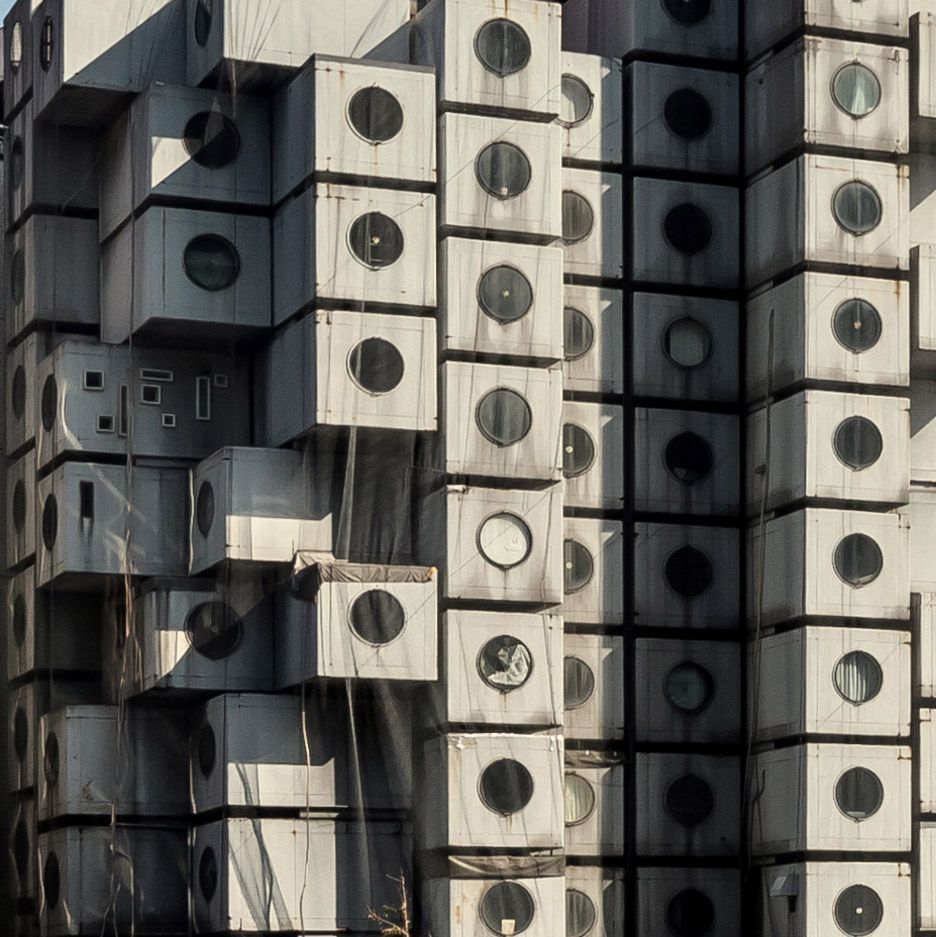
Kisho Kurokawa, who died in 2007, originally designed the modular housing block to attract single businessmen – the archetypal Japanese salaryman – looking for a compact and conveniently located apartment.
Formed of two interconnected towers made of concrete, the Nakagin Capsule Tower was built of 140 prefabricated steel modules bolted onto the main shafts.
Each module measures 2.5 metres by four metres and has a distinctive round window at one end.
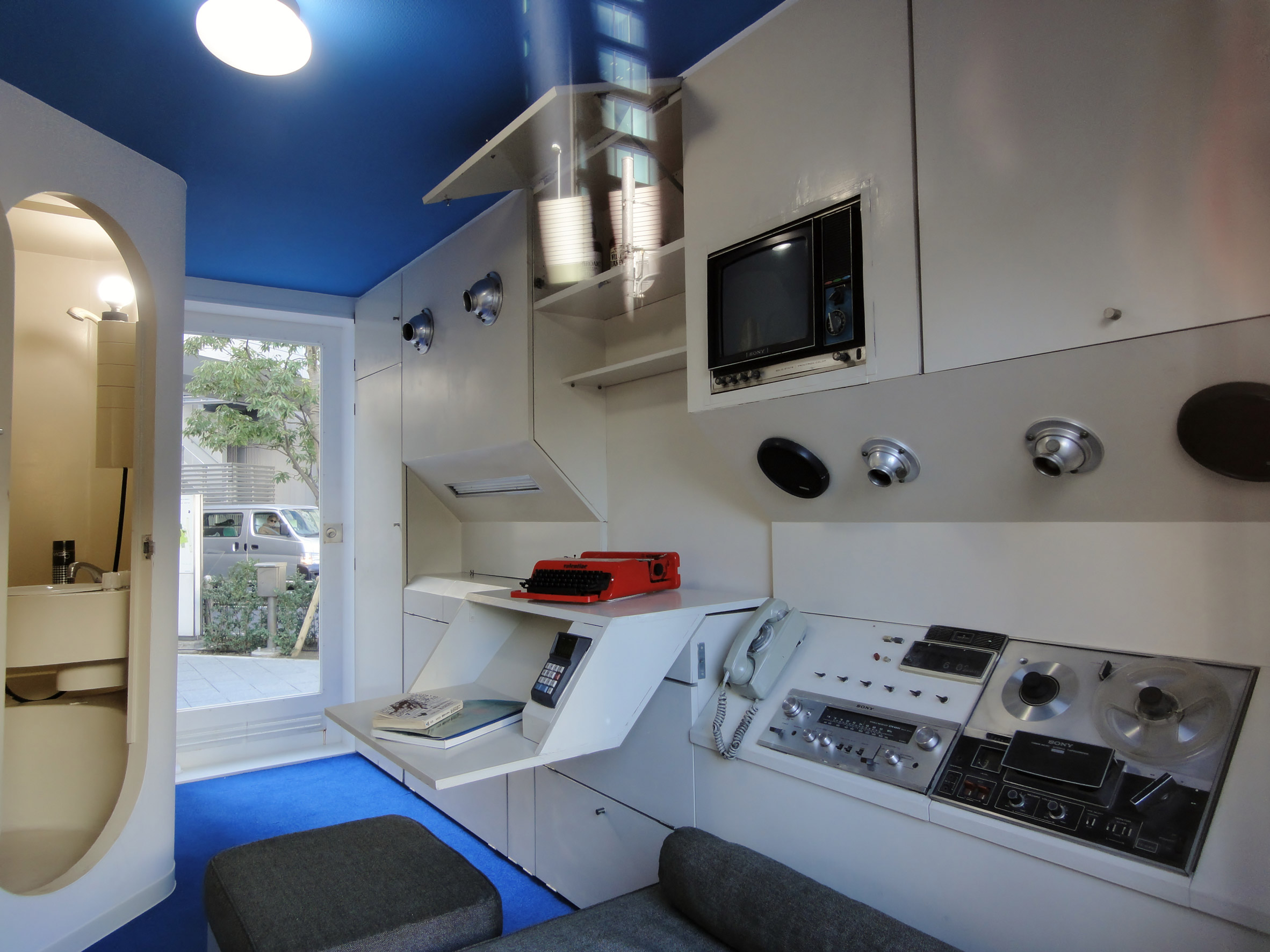 The interiors came with built-in furniture and technology. Photo is by Dick Johnson
The interiors came with built-in furniture and technology. Photo is by Dick Johnson
The tiny homes were each fitted out with built-in furniture including a bed under the porthole-style window, cabinets, a kitchen stove and fridge, a telephone and Sony reel-to-deck recorder. A small bathroom even contains a tiny tub.
Kurokawa's vision was that each capsule could be rotated out and replaced every 25 years, to keep the building fresh, but problems with ownership and funding meant this never came to be. Instead, many of the capsules fell into disrepair.
The distinctive tower was built as part of Japan's Metabolist architecture movement, which was pioneered by Kurokawa along with Kiyonori Kikutake and Fumihiko Maki.
As students in the 1960s the architects were influenced by Marxism, megastructures and social growth. Metabolism was named for the constant biological process that keeps a body alive.
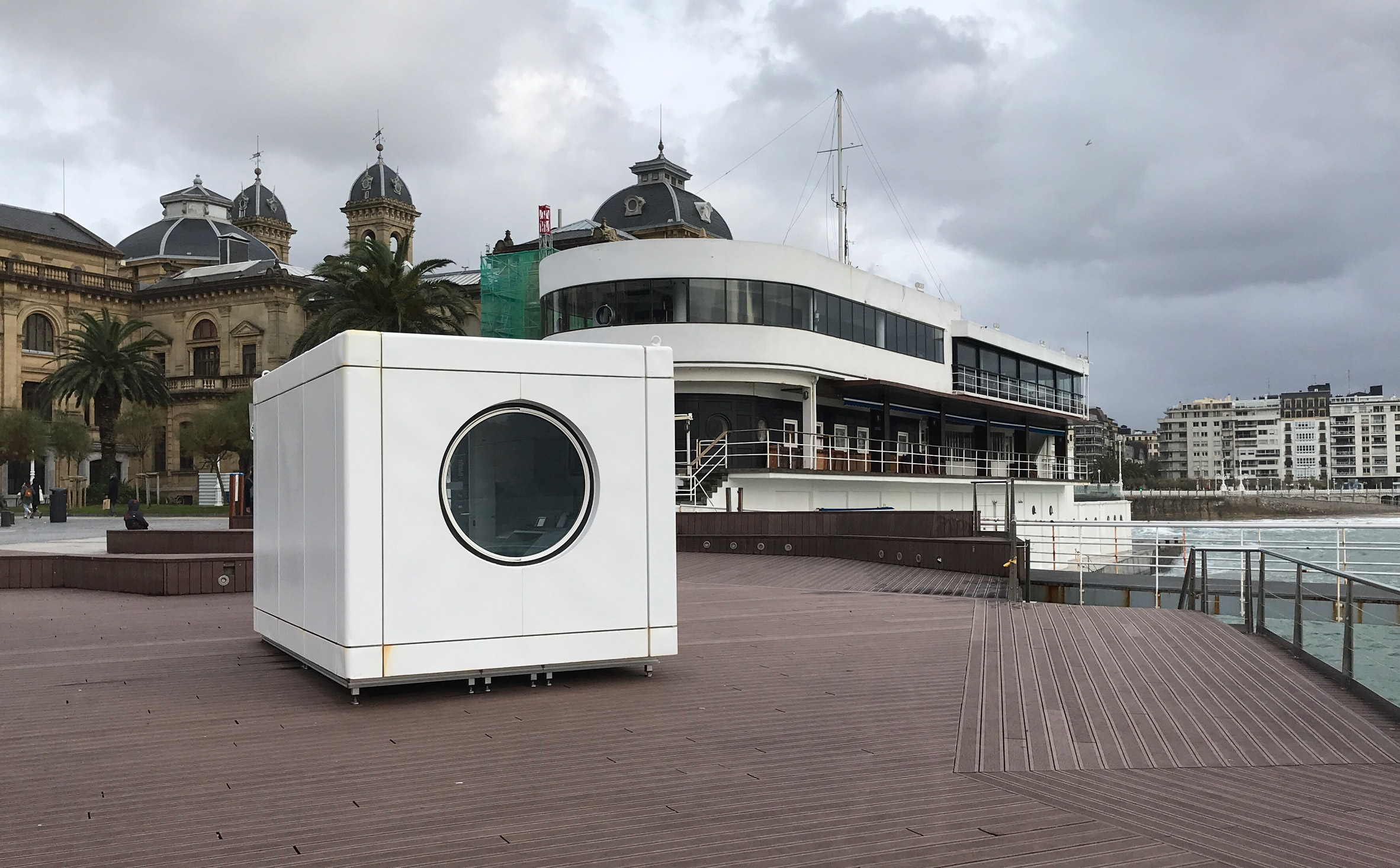 One module has already been removed and displayed in museums. Photo is by Josugoni
One module has already been removed and displayed in museums. Photo is by Josugoni
Nakagin Capsule Tower embodies the ideals of Metabolism in the way that the cantilevered modules were designed to be swapped in and out, like the cells of an organism constantly renewing itself.
But this vision was never achieved and several of the capsules were abandoned or turned into storage units.
In 2007 the collective of owners announced they would sell to a developer who planned to demolish the building and build a new apartment block in its place.
However, the developer went bust in the 2008 recession, leaving the future of the tower uncertain.
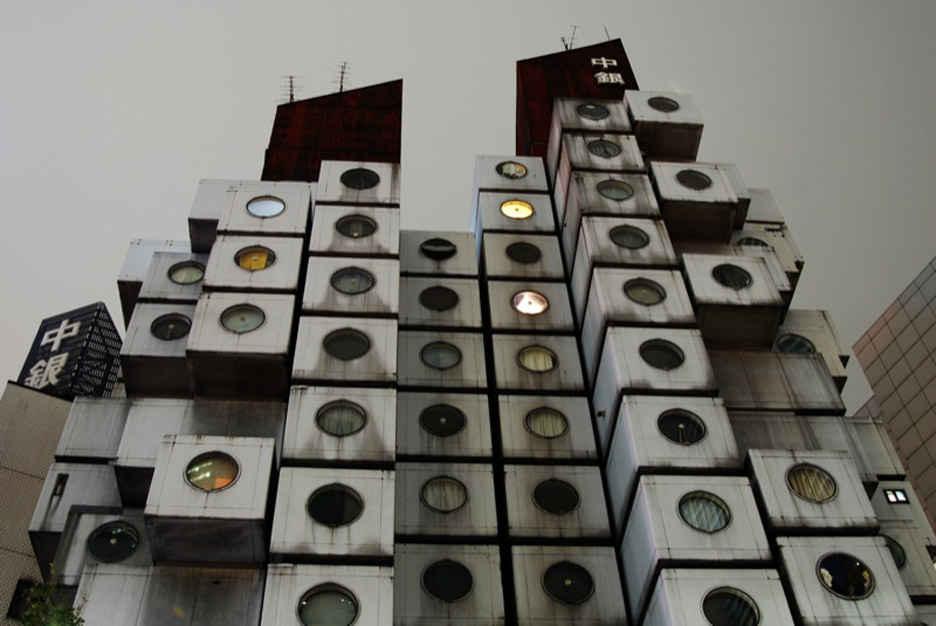 Architecture fans have been able to rent out capsules to stay in. Photo is by Scarlet Green
Architecture fans have been able to rent out capsules to stay in. Photo is by Scarlet Green
In 2018 the owners started renting out the capsules on a monthly basis to architecture enthusiasts while the search for a buyer continued, until the coronavirus pandemic shut down negotiations.
Before Nakagin Capsule Tower is demolished, the residents association plans to undertake a survey of the building to be published in a book to record the architecture.
All around the world mid-century architecture is under threat. In the US, campaigners are lobbying to save Helmut Jahn's James R Thompson Center, while in the UK the 20th Century Society is campaigning to save a number of Brutalist buildings.
Photography is via Wikimedia Commons.
The post Nakagin Capsule Tower to be dismantled and turned into rental accommodation and exhibits appeared first on Dezeen.
#all #architecture #news #japan #tokyo #modulararchitecture #kishokurokawa #metabolism
3 Shares
Business and Biology
The question of the similarities and differences between business and biological systems was raised at HN.
The market / biology comparison is interesting, though probably needs some work.
Firms, at least to a certain size, are about increased specialisation. That is, they focus on doing one thing. Rather than predator/prey relationships, firms have exchange relationships, arbitraging off of distinct specialisations and differential capabilities, with much of that being supply-chain related.
(A recent discussion of semiconductor fabrication noted that an end-product device might comprise of 1,000 or more individual steps, and 70 or more logistical (that is, shipping) links before reaching the final purchaser.)
Individual organisms are, at least to a first approximation, generalists as compared to businesses. They must source food or sustenance, provide for circulation, metabolism, health, etc. Plants have structural and photosynthetic requirements. Many animals have sensing, neurological, mobility, and defence functions. The largest individual organisms still occupy only tiny fractions of the Earth's surface individually --- whales, fungi, slime molds, clonal trees. Past a certain point, organisms simply cannot coordinate at large scale within a single entity.
So the reason single firms fight amongst others of similar stripe is because each is attempting to control a highly specialised niche.
(There's another question of just where and how businesses become extensive. The question of organisation of industry by type or sector goes back to Quesnay and in modern variants seems to be seen as 4--5 distinct levels. I'd argue that it's network-based firms which are most likely to be expansive, though that includes a fairly broad notion of just what a network is. See: https://old.reddit.com/r/dredmorbius/comments/74dm5o/seeking_research_on_inclusive_measures_of/)
The scale question is interesting. Yes, individual human firms are far larger than the alrgest organisms. But the range of scales found in nature remains larger. You can look at length, volume, mass, or metabolism.
The smallest bacteria are about 0.2 μm in length, which (assuming density of water) is about 3*10^-17^ kg
The largest blue whale is 30m in length, and 17,000 kg.
(There are larger organisms, giant sequoia trees, slime molds, clonal trees. They shift the calculus by a few more orders of magnitude, but my point is proved sufficiently here.)
That's a length difference of about 150 million (10^8^), and a mass differential of about 507 billion billion (10^20^). On either measure, the range from smallest to largest firm would be smaller, if only because the human population has not yet reached 507 billion billion.
(In looking at metabolism, values are harder to find, especially for bacteria. A blue whale has a basal metabolic rate of about a half-million kilocalories (food calories) per day, with a _total_ expenditure larger than that. The metabolism of mammals scales as BMR=KM^2/3^, that is, to the 2/3 power of mass --- larger mammals are more efficient at using energy, if less efficient at passing through mouse holes. Economic metabolism is at the rate of approximately $1,000/barreloil, or $1,000 / 1.5 million kilocalories, or about $1 per 1,500 kilocalories.)
By absolute magnitude, the largest firms are of course larger than the largest animals or plants. Much of that comes from an ability to both organise and process inputs at a much larger scale. For an organism to operate at global scale, it would need to physically be global scale. A firm virtualises many of its coordination activities through communications --- a sort of "spooky action at a distance", if you will. James Beniger, The Control Revolution (1986) (one of several books by the same title), listed in the Reddit post above, discusses much of the development of this. In a sense, a firm is a financial, legal, commercial, social, technical, and organisational virtual construct.
What firms can do that organisms cannot is incorporate other freestanding entities within themselves. "Mergers and acquisitions" is not a chapter you'll find in a biology text. It's an extraordinarily common business practice. If not always a successful one.
Geoffrey West, Scale looks into the question of magnitudes as well.
Adapted from an HN thread: https://news.ycombinator.com/item?id=27038999
#business #markets #biology #scale #metabolism #BlueWhales #MergersAndAquisitions #JamesBeniger #TheControlRevolution
One person like that
1 Comments




